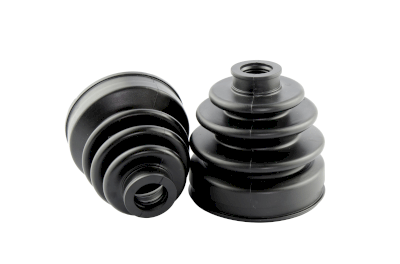What Is a Joint Boot?
 A joint boot is a protective rubber device used in automotive joints like constant velocity joints and ball joints. They seal in lubricating grease and prevent foreign substances like dust and water from entering. There are two main types of joint boots: one for parts involving centrifugal force, expansion, and contraction, and another for tilting movements.
A joint boot is a protective rubber device used in automotive joints like constant velocity joints and ball joints. They seal in lubricating grease and prevent foreign substances like dust and water from entering. There are two main types of joint boots: one for parts involving centrifugal force, expansion, and contraction, and another for tilting movements.
Uses of Joint Boots
Joint boots are essential in various automotive parts, ensuring the smooth operation and longevity of components. They are used in:
- Driving Parts: Constant velocity joints in drive shafts.
- Suspension Equipment: Ball joints in suspension arms and knuckles.
- Steering Device: Components in rack-and-pinion and ball-and-nut steering systems.
Their application in the steering and suspension systems, as well as in drive parts, highlights their importance in vehicle safety and performance.
Principle of Joint Boots
Joint boots operate under challenging conditions, enduring constant bending, turning, and exposure to harsh elements. Made of rubber, they are prone to breakage and deterioration over time. This is especially critical for drive shaft boots, which rotate at high speeds. A broken or cracked boot can lead to grease leakage, causing noise, vibration, and potential safety hazards.
Split-type boots, designed for easier replacement, have the convenience of a single cut sealed with adhesive. However, they may be less durable than non-split types and require careful maintenance to prevent grease leakage.